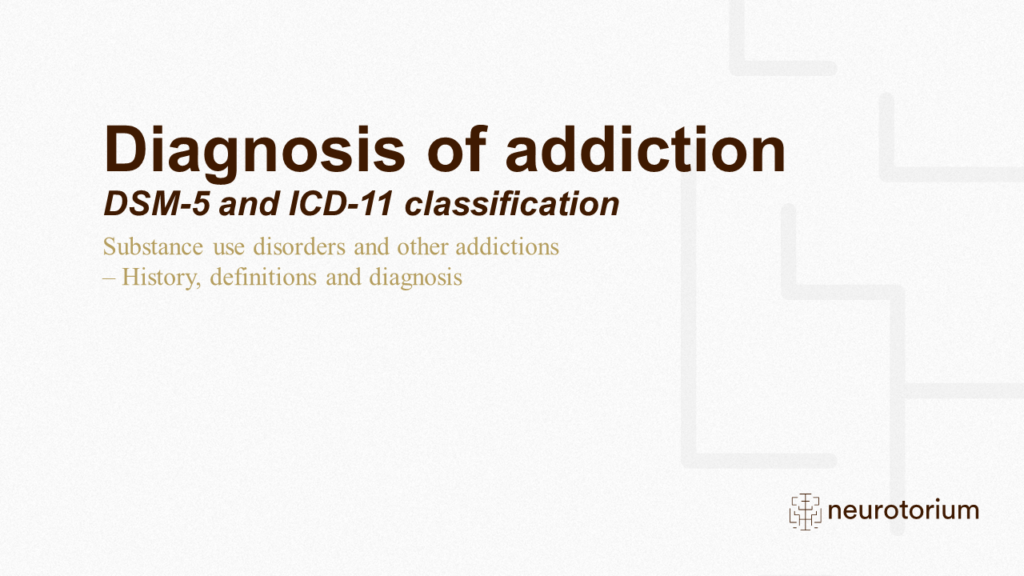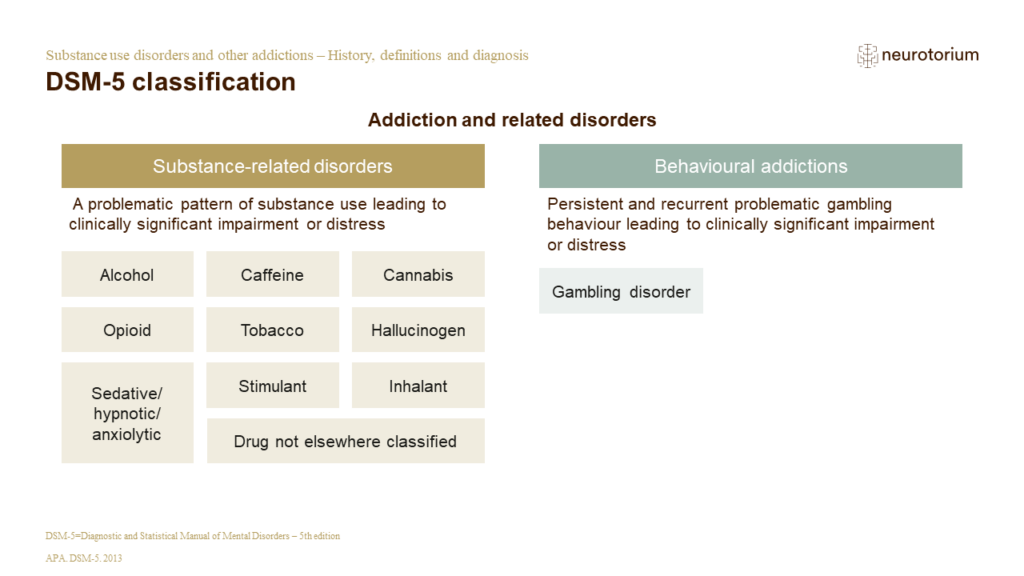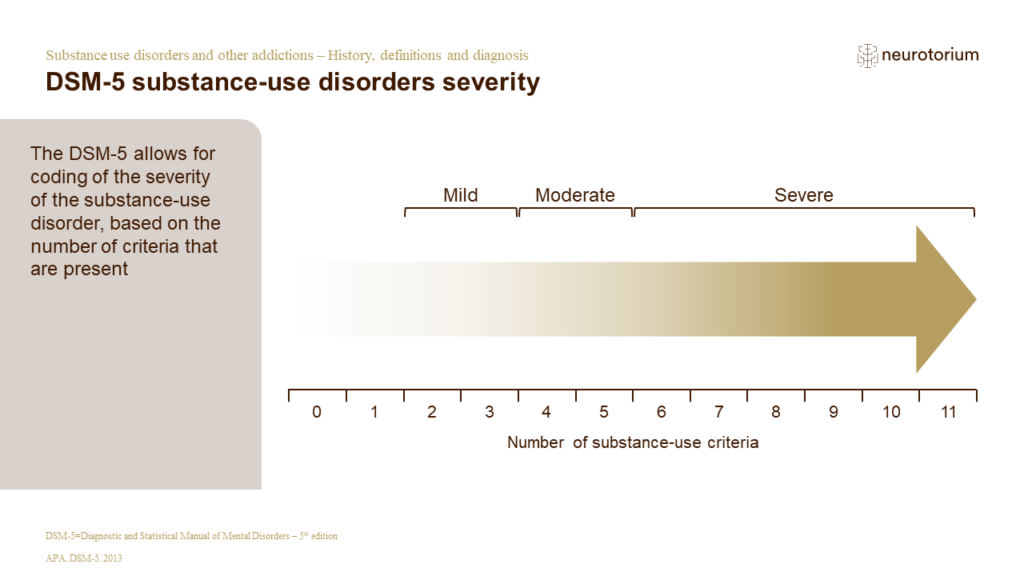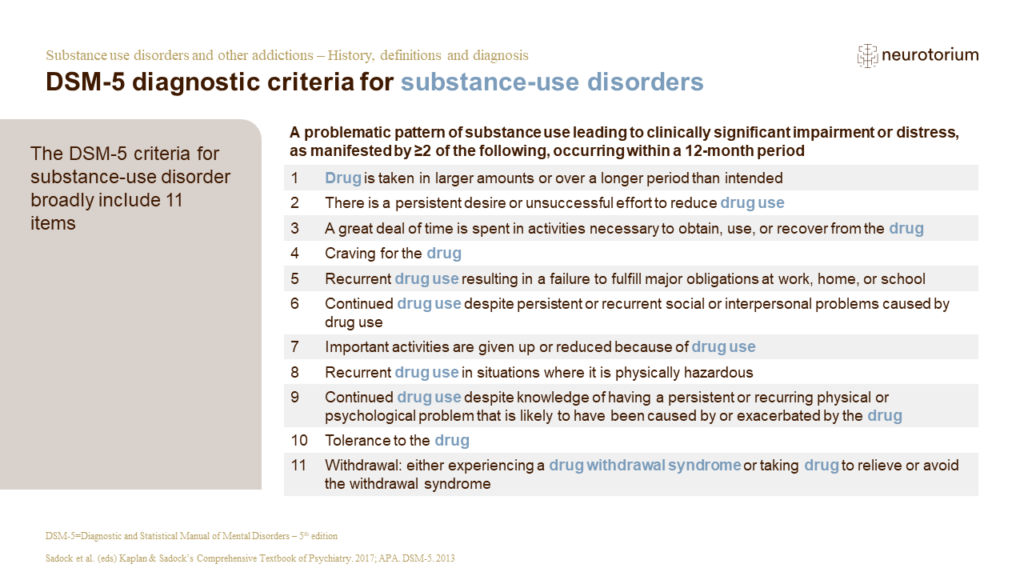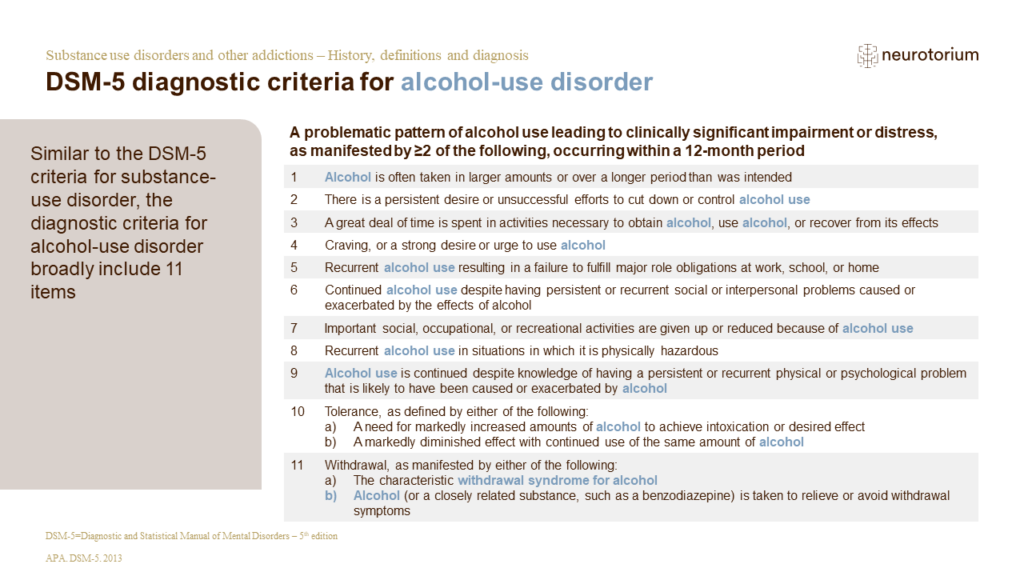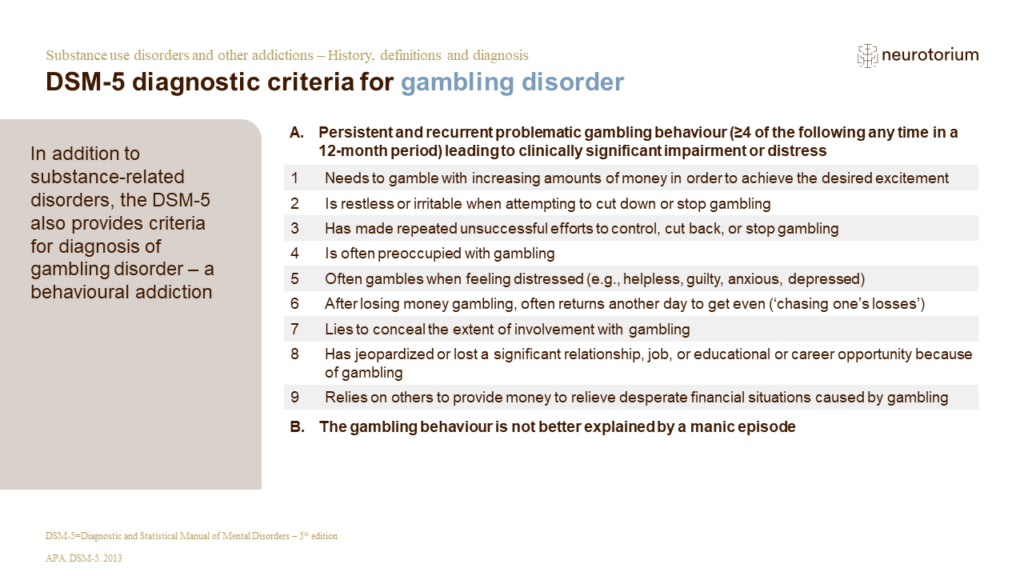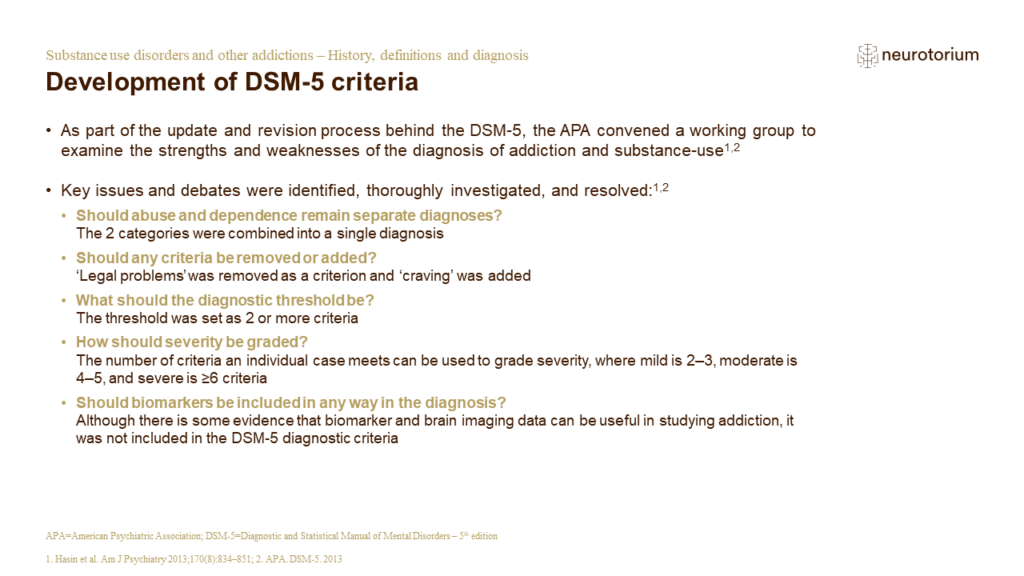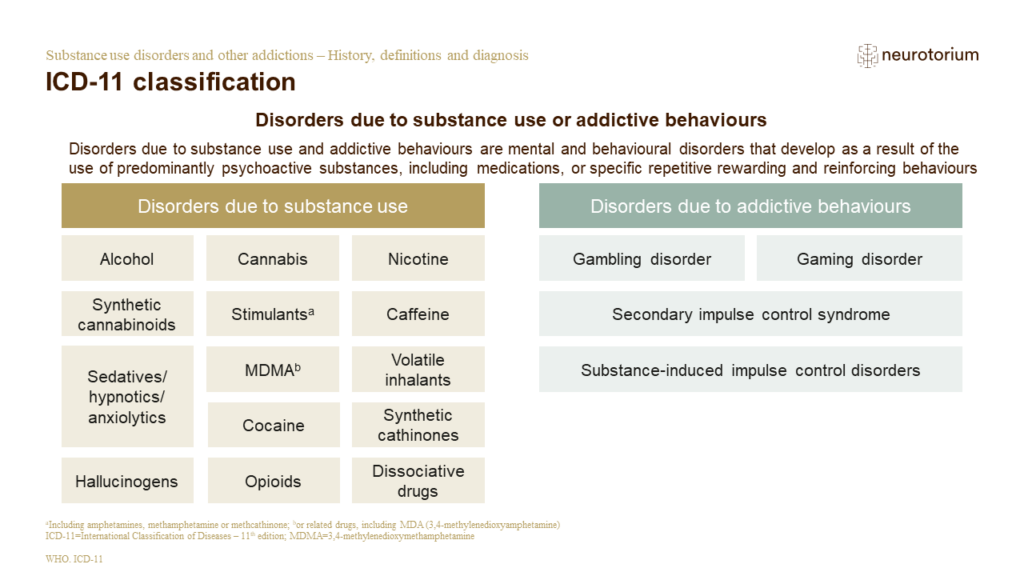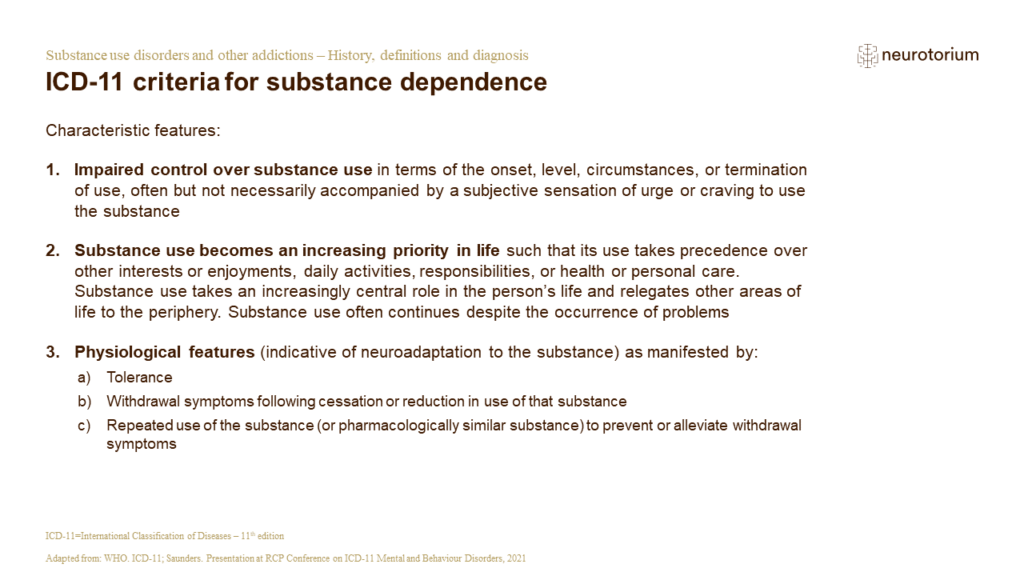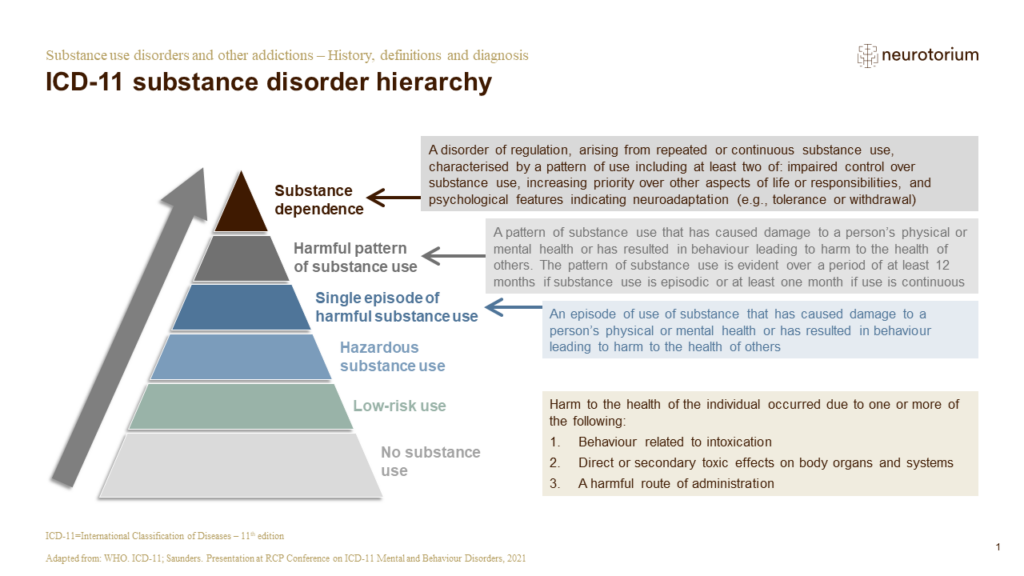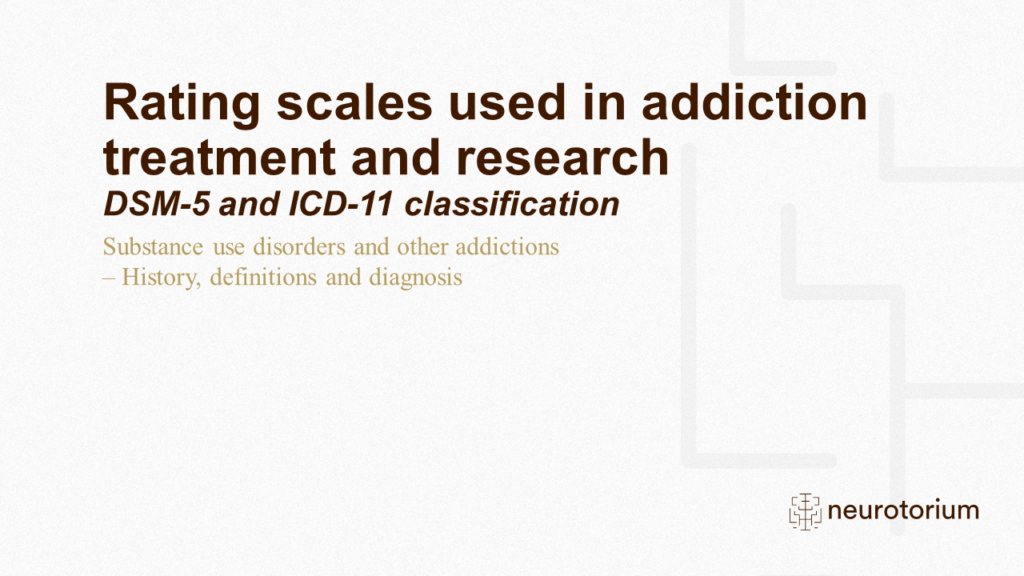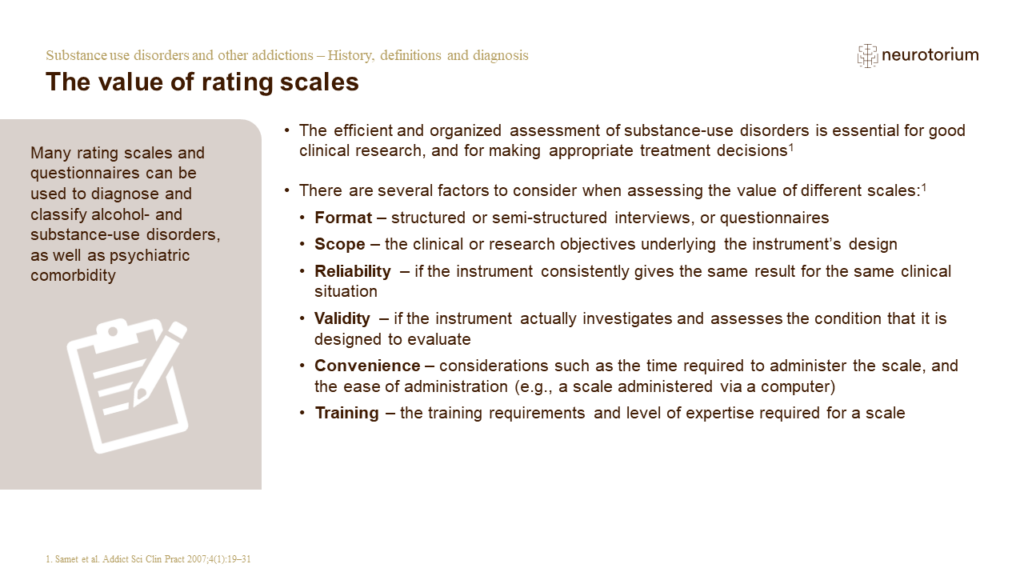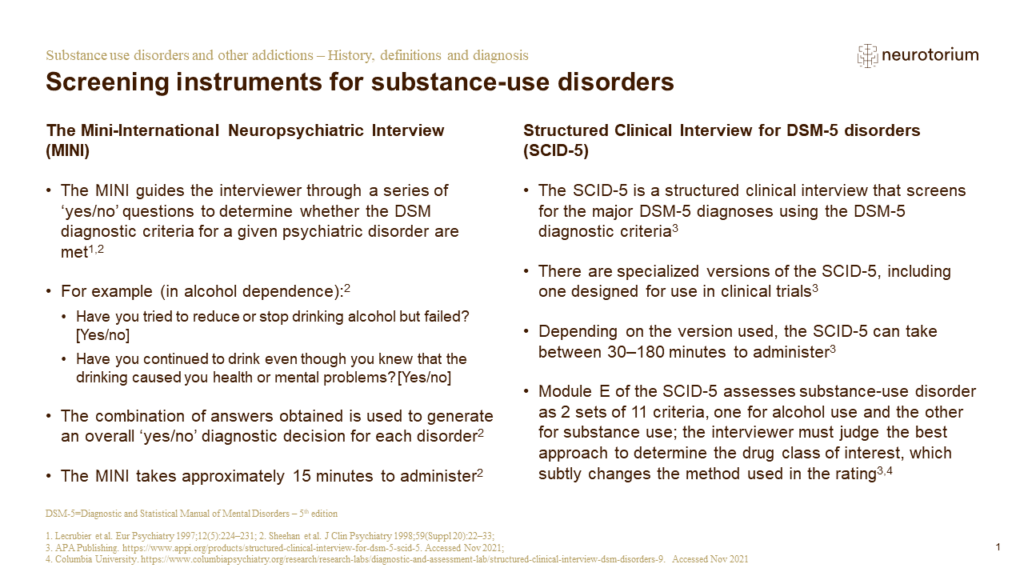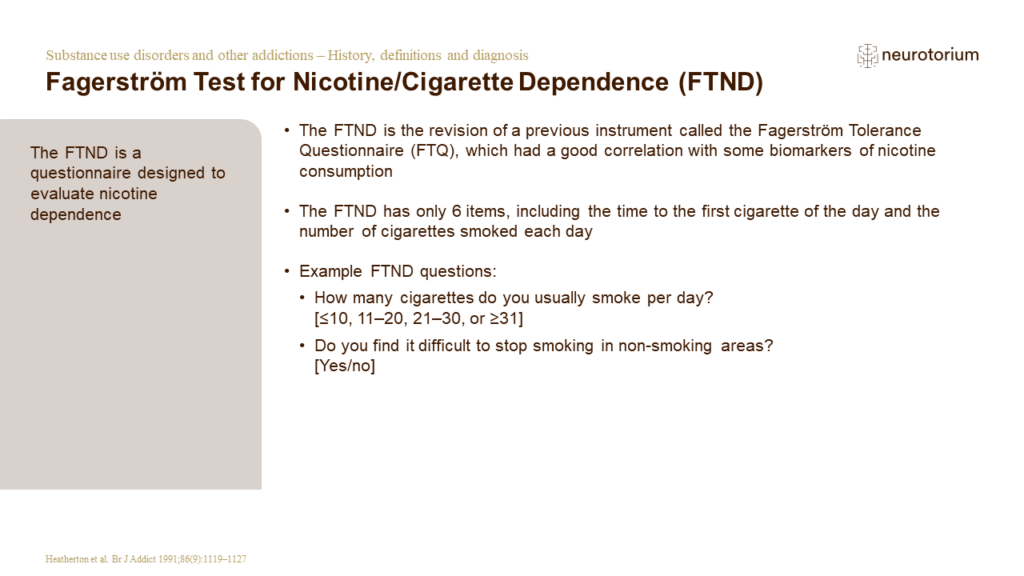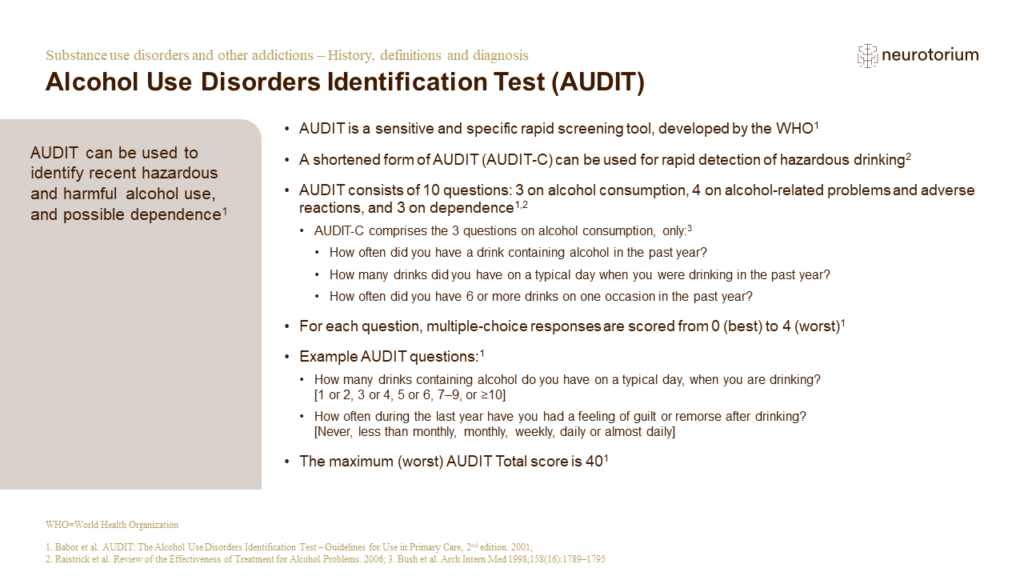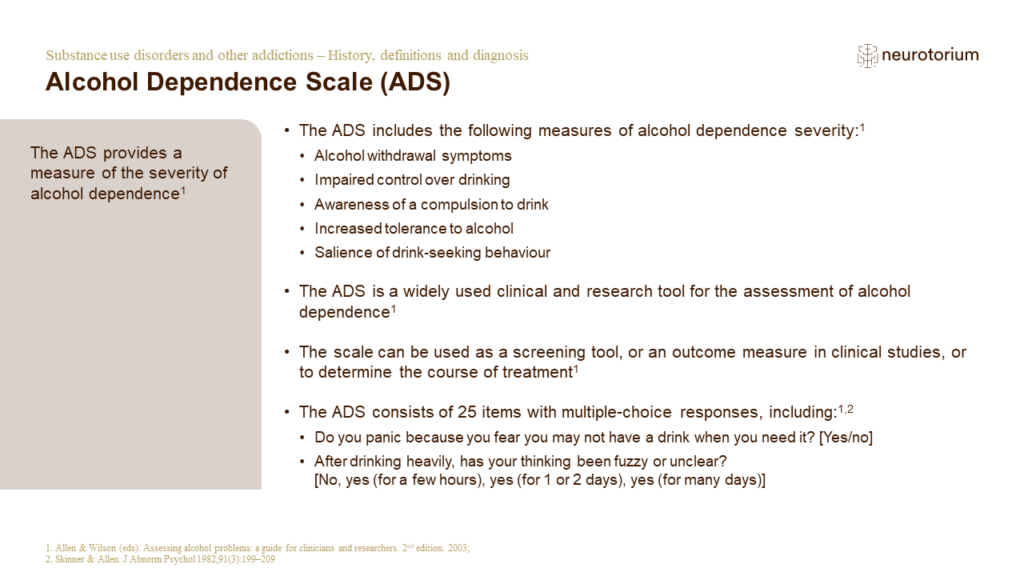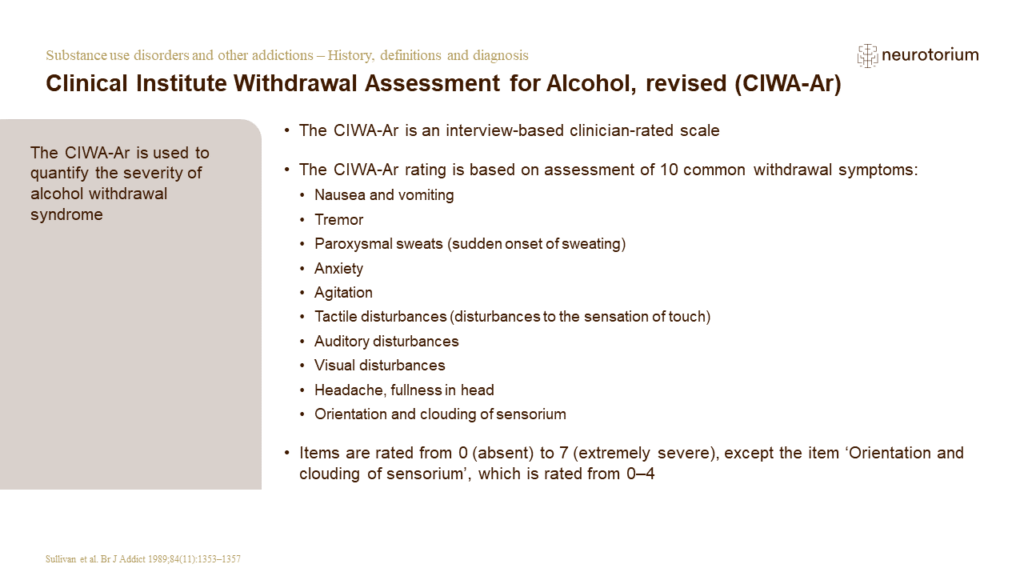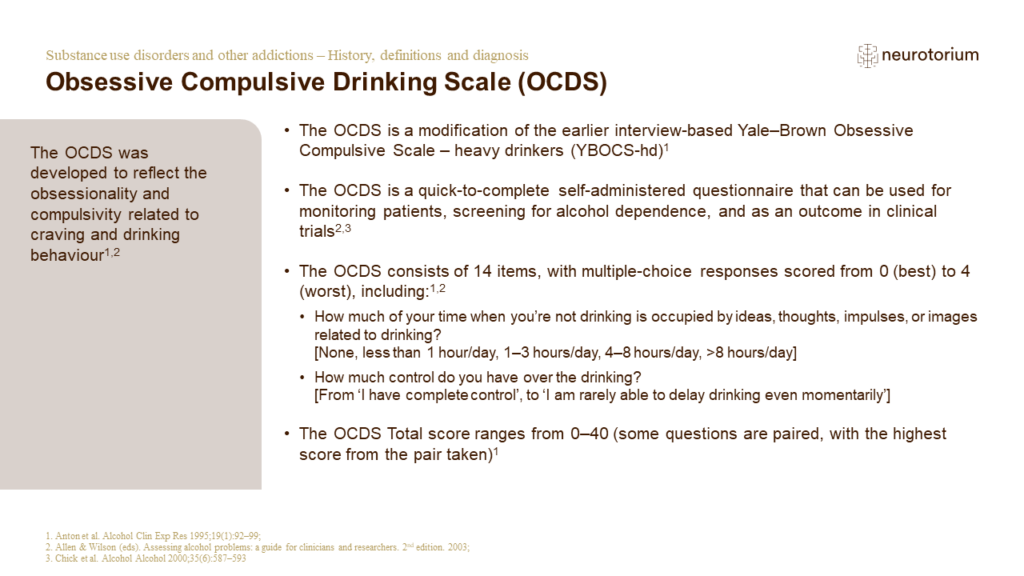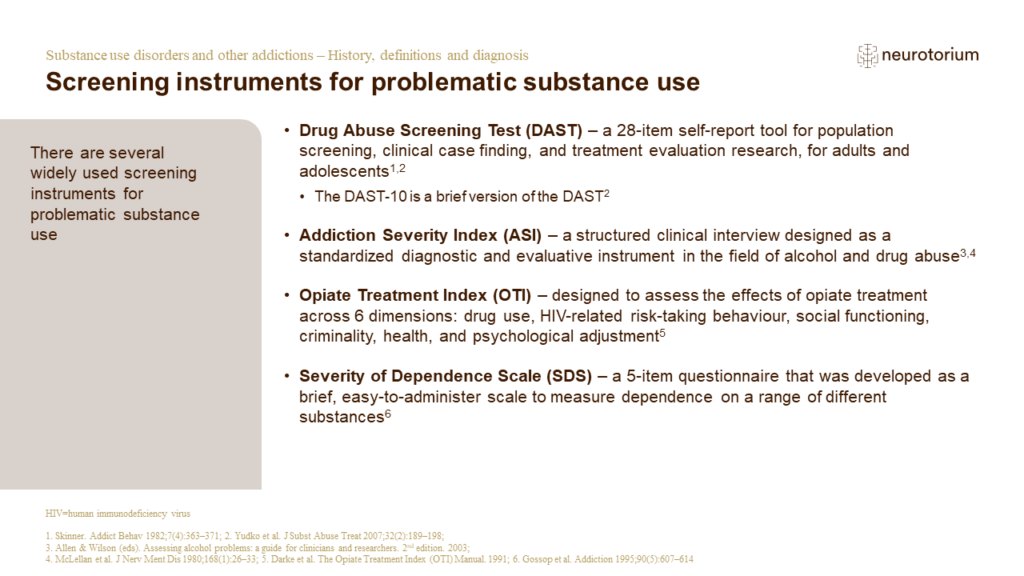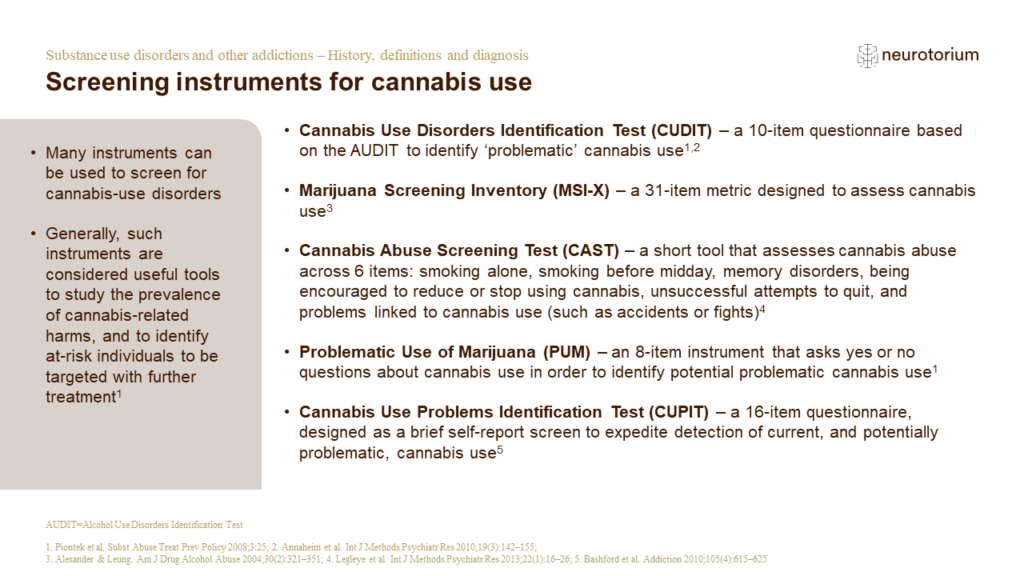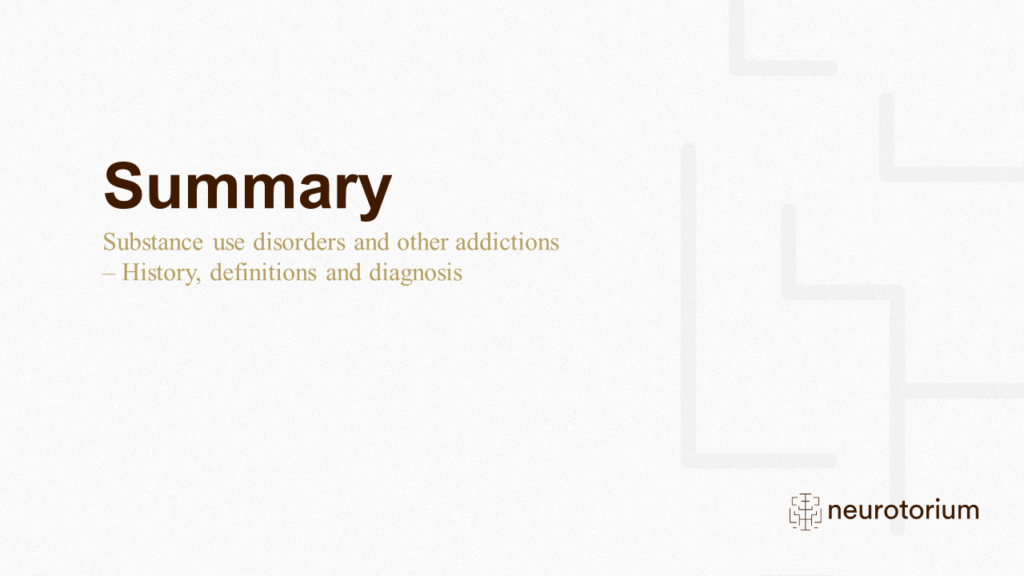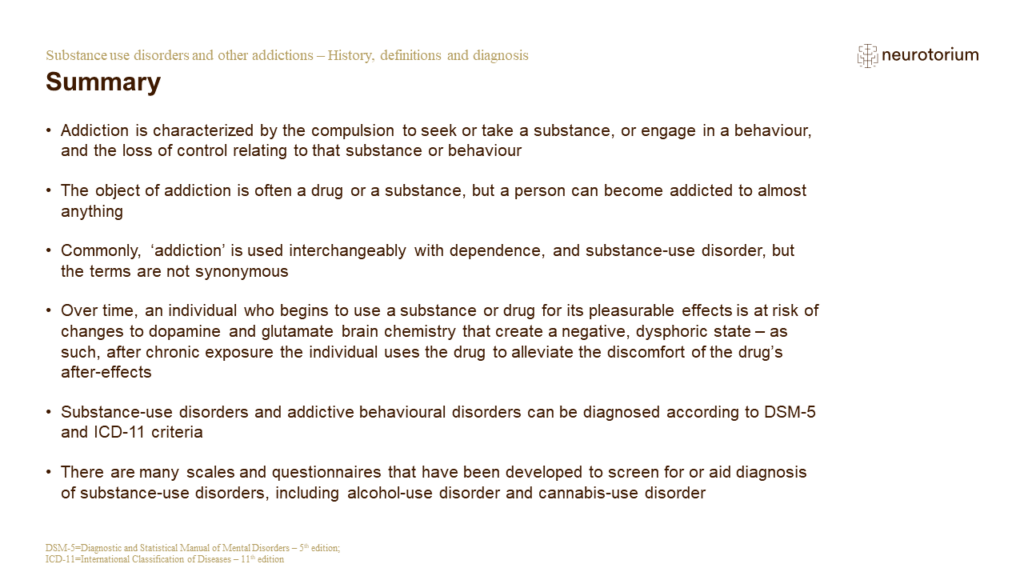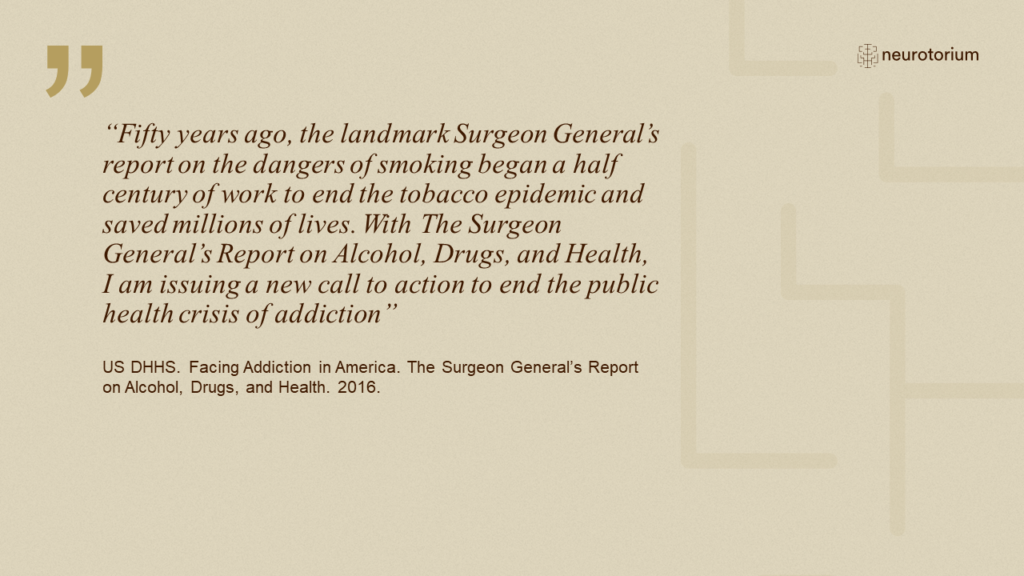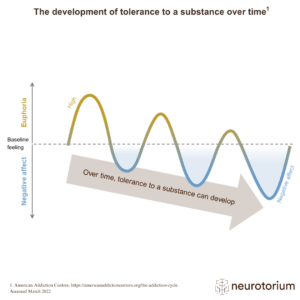Index for
slide deck
History, definitions and diagnosis
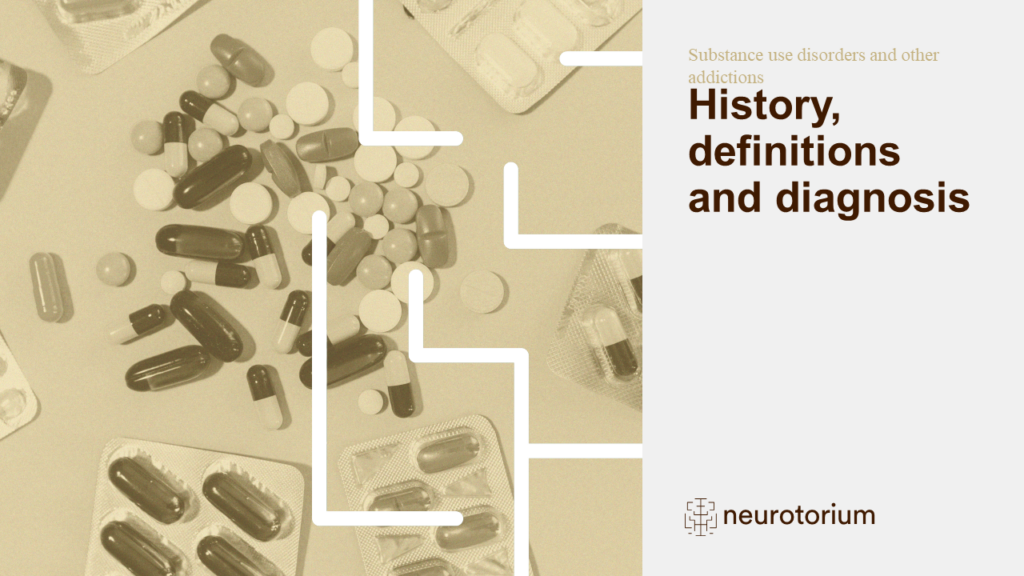
Substance use disorders and other addictions
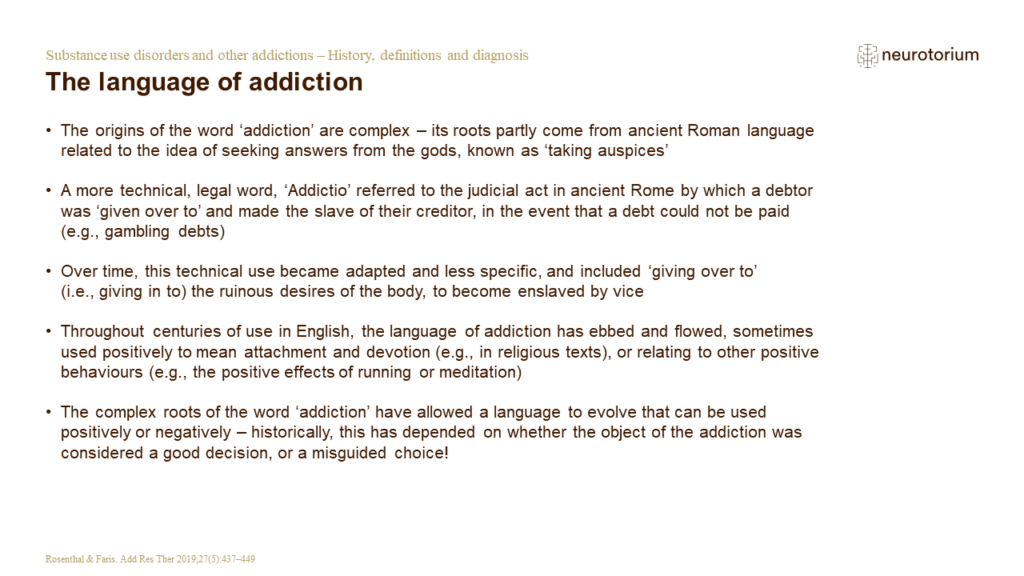
The language of addiction
Whilst the origins of the word ‘addiction’ are complex, as outlined on the slide, the roots of the word lie in the concept of enslavement.[1,2] In modern use, the concept of addiction is still poorly defined; however, addiction is often used to mean a state in which a per…
Introduction
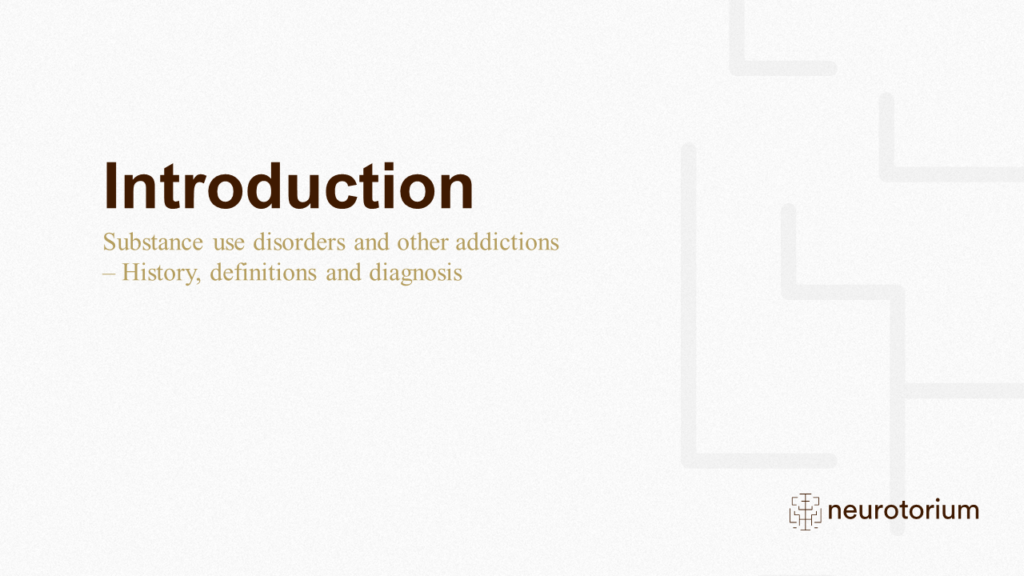
Introduction
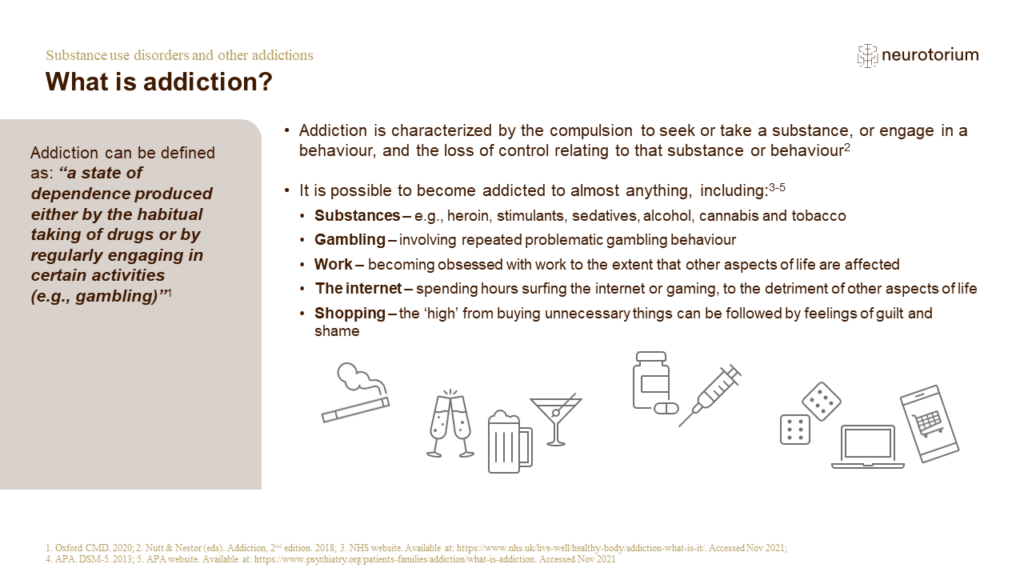
What is addiction?
There are many possible reasons that an addiction can develop, but, once developed, an addiction can place considerable strain on an individual and on the people around them.[3,4] An addiction can impact a person’s work life, and relationships, and can have serious psycho…
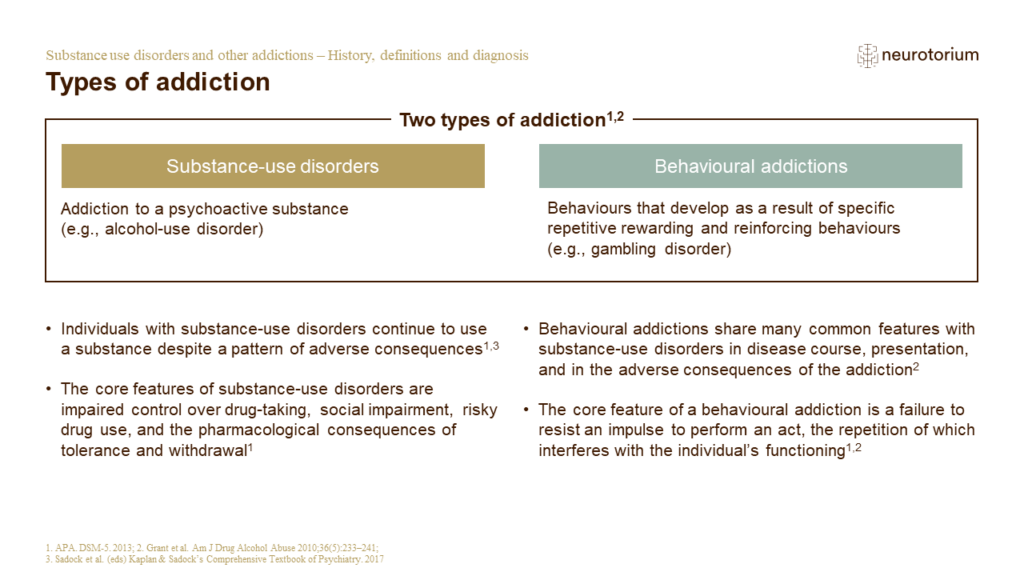
Types of addiction
As shown on the slide, addiction can be conceptualized as encompassing substance-use disorders, and behavioural addictions.[1,3] Although categorised separately,[1] substance-use disorders and behavioural addictions share many similarities, and are thought to share common…
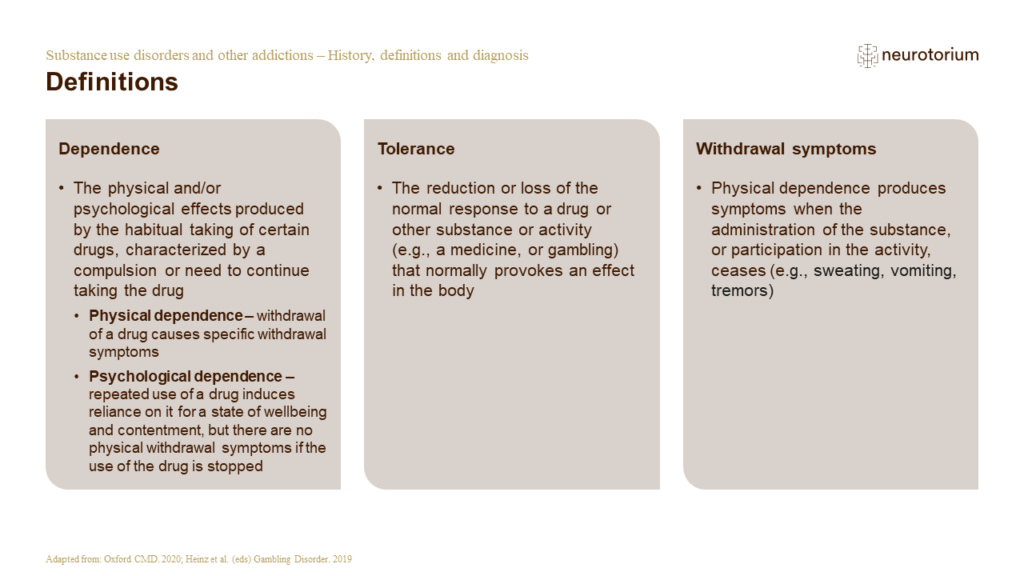
Definitions
The slide presents some dictionary definitions of terms relating to addiction.
References used on slide:
Goudriaan AE, van den Brink W, van Holst RJ. Gambling Disorder and Substance-Related Disorders: Similarities and Differences. In: Heinz A., Romanczuk-Seiferth N, Poten…
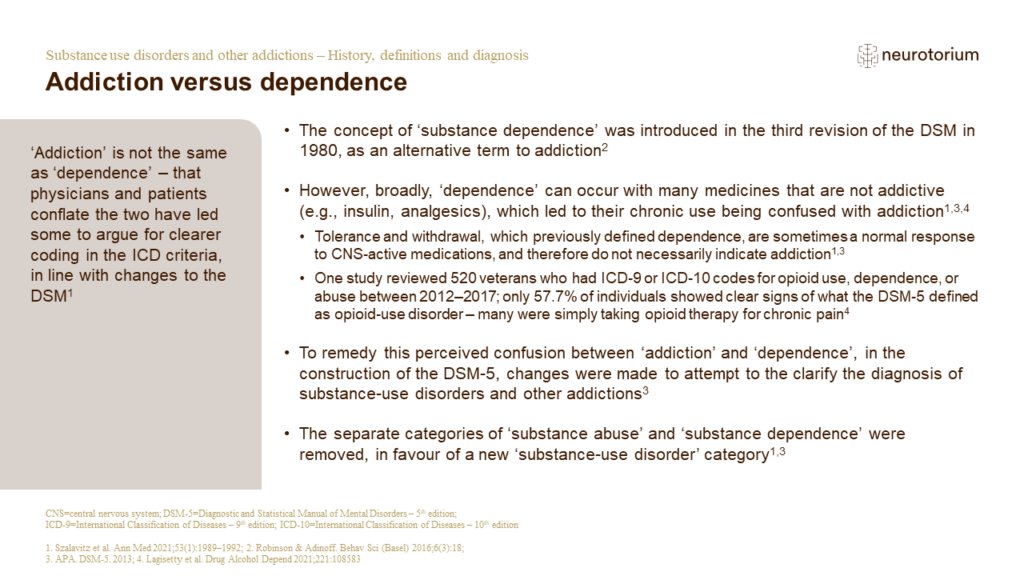
Addiction versus dependence
The DSM-5 commentary recognizes that addiction is a term that is easily confused with dependence.[3] The categories of substance abuse and substance dependence were eliminated in the DSM-5, and replaced with the overarching category of substance-use disorders.[3] Within t…
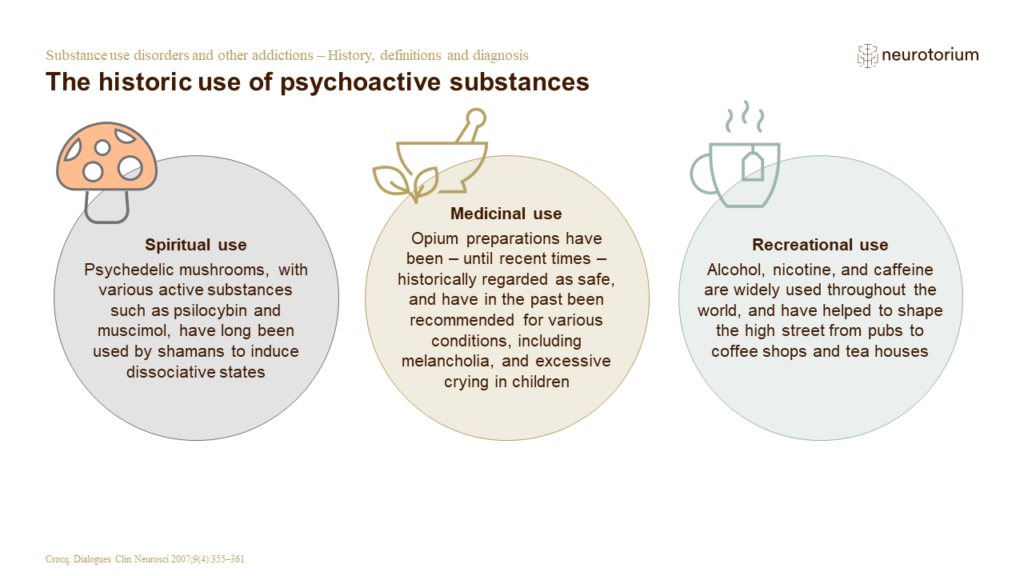
The historic use of psychoactive substances
The complex history of substance use, and addiction, is reflected in the pendulum swings of history where attitudes to addiction have changed over time.[1] Such debates that have arisen include whether addiction is a sin or a disease, whether treatment of addiction should…
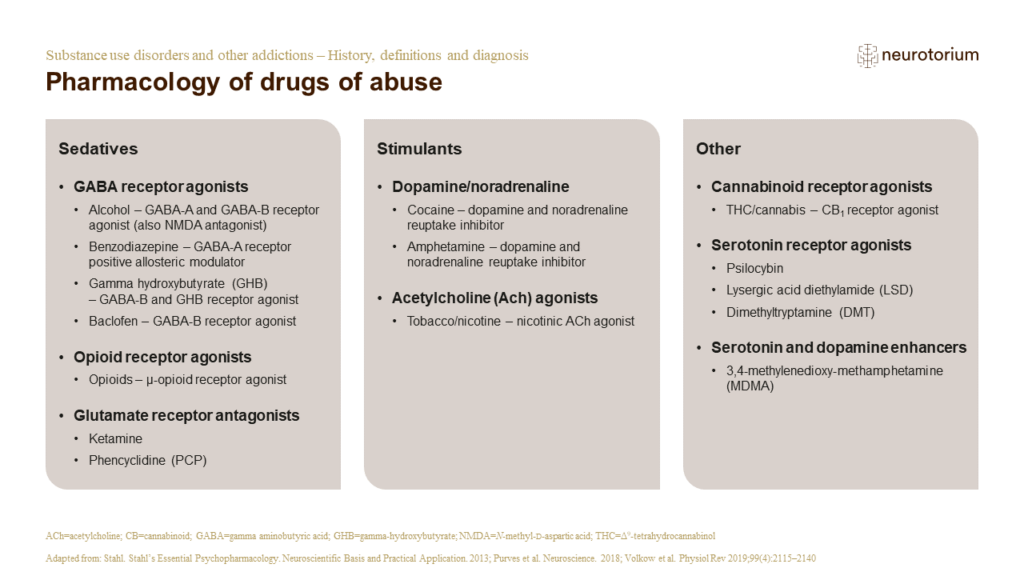
Pharmacology of drugs of abuse
As shown on the slide, drugs of abuse have a range of different targets and interact with different neurochemical pathways in the brain.
References used on slide:
Purves D, Augustine GJ, Fitzpatrick D, et al. (eds). Neuroscience, 6th edition. Oxford: Oxford University Pres…
The mechanics of addiction
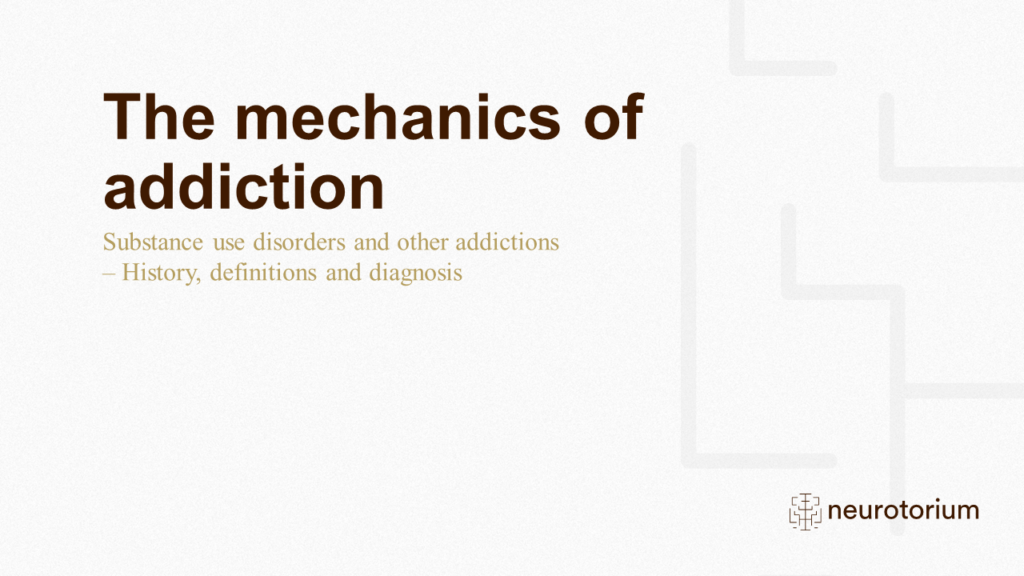
The mechanics of addiction
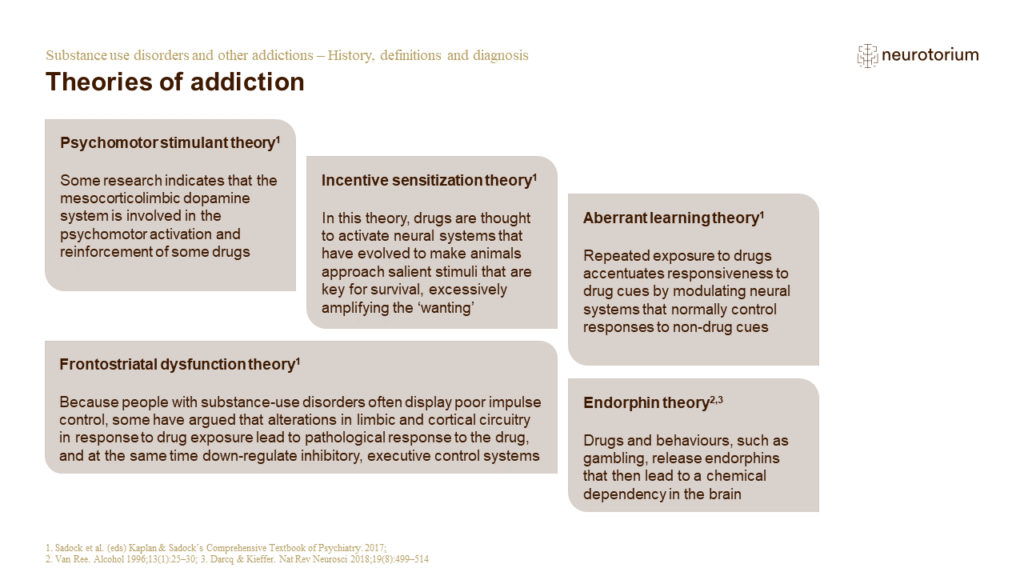
Theories of addiction
Many theories attempt to explain the complex phenomenology of addiction, some of which are outlined on the slide. These various approaches to explaining addiction are not mutually exclusive, and it seems likely that different parts of separate theories might best explain …
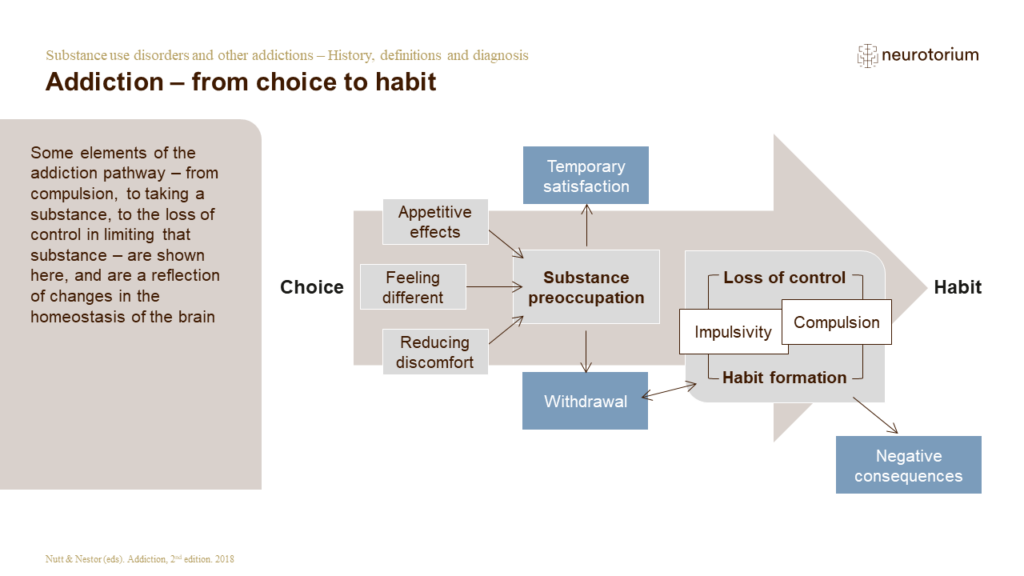
Addiction – from choice to habit
The slide conceptualises how, though preoccupation, withdrawal, and habit formation, a choice can become a habit.[1] This process of addiction can be thought of as reflecting changes in brain homeostasis, and can ultimately lead to:[1]
- decreased sensitivity for rewards …
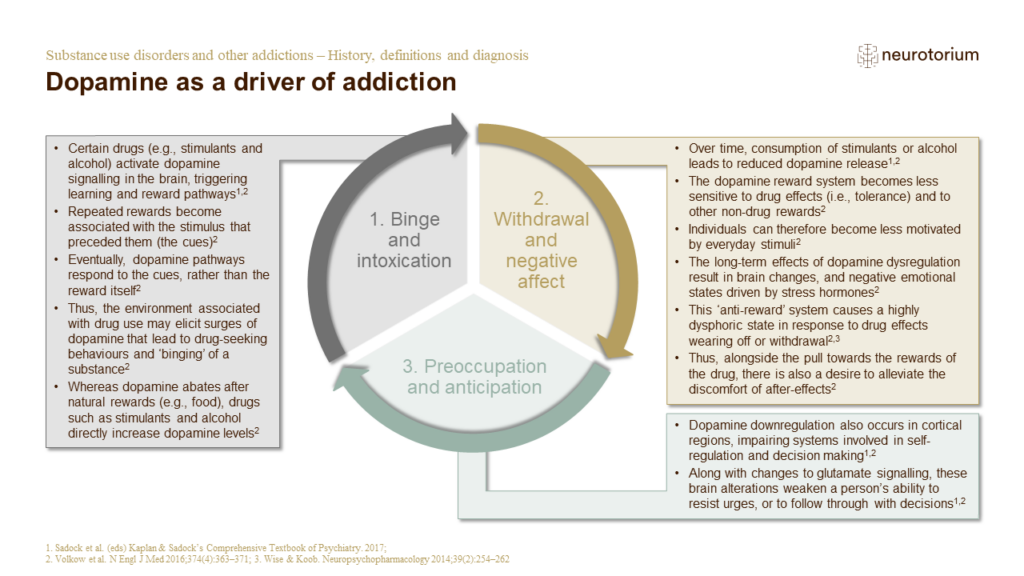
Dopamine as a driver of addiction
As shown on the slide, over time a person with addiction who starts taking stimulant drugs or alcohol for pleasure experiences brain changes that result in that person needing to taking drugs in order to relieve dysphoria.[1,2,4] The dysphoria and negative affect that com…
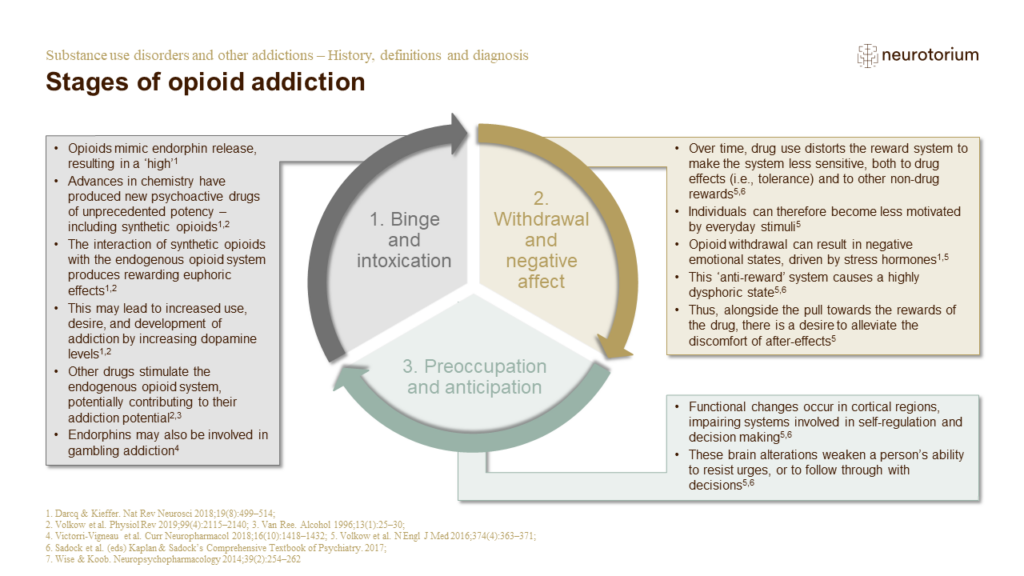
Stages of opioid addiction
As with addiction to stimulants or alcohol, over time a person with addiction who starts taking opioid drugs for pleasure experiences brain changes that result in that person needing to take drugs in order to relieve dysphoria.[5,6,7]
References:
[1] Darcq E, Kieffer BL. …
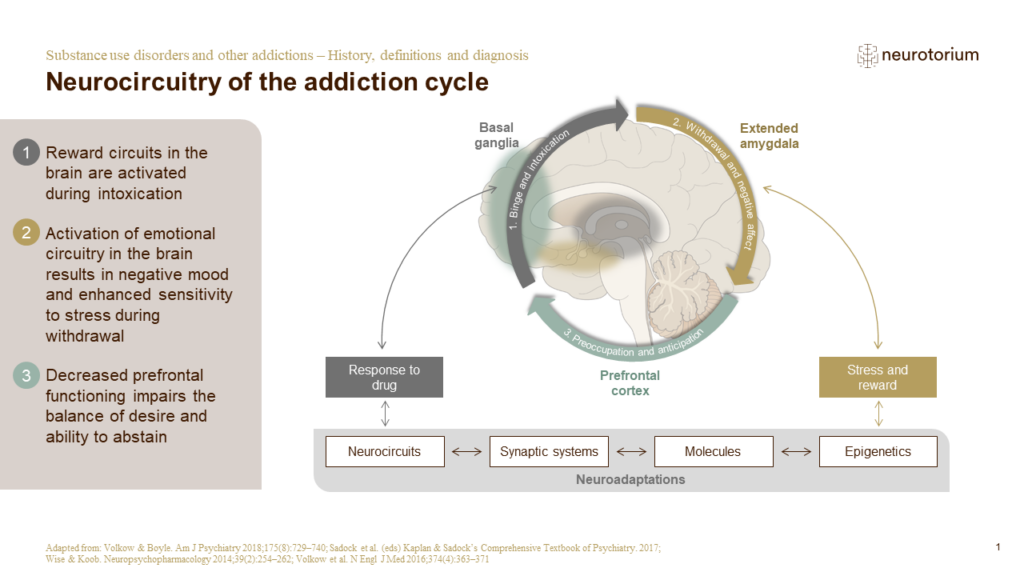
Neurocircuitry of the addiction cycle
The diagram on the slide illustrates the interaction between neurocircuitry and behaviour of addiction, divided into binge/intoxication, withdrawal/negative affect, and preoccupation/anticipation, each of which is associated with the activation of certain neurological pat…


